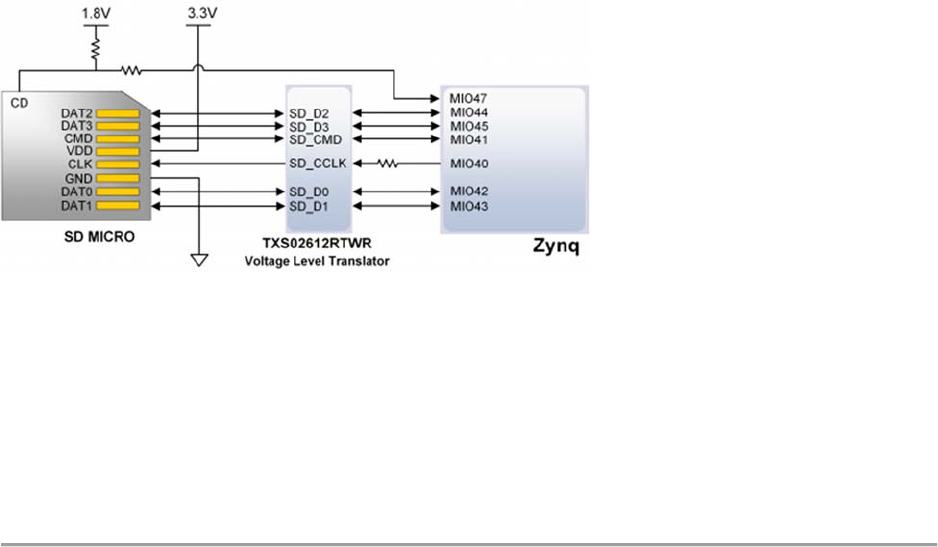User manual

Figure 7.1. microSD slot signals
Both low speed and high speed cards are supported, the maximum clock frequency being 50
MHz. A Class 4 card or better is recommended.
Refer to section 3.1 for information on how to boot from an SD card. For more information,
consult the Zynq Technical Reference manual.
8 USB Host
The Arty Z7 implements one of the two available PS USB OTG interfaces on the Zynq device. A
Microchip USB3320 USB 2.0 Transceiver Chip with an 8-bit ULPI interface is used as the PHY.
The PHY features a complete HS-USB Physical Front-End supporting speeds of up to 480Mbs.
The PHY is connected to MIO Bank 1/501, which is powered at 1.8V. The usb0 peripheral is
used on the PS, connected through MIO[28-39]. The USB OTG interface is configured to act as
an embedded host. USB OTG and USB device modes are not supported.
The Arty Z7 is technically an “embedded host”, because it does not provide the required 150 µF
of capacitance on VBUS required to qualify as a general purpose host. It is possible to modify
the Arty Z7 so that it complies with the general purpose USB host requirements by loading C41
with a 150 µF capacitor. Only those experienced at soldering small components on PCBs should
attempt this rework. Many USB peripheral devices will work just fine without loading C41.
Whether the Arty Z7 is configured as an embedded host or a general purpose host, it can provide
500 mA on the 5V VBUS line. Note that loading C41 may cause the Arty Z7 to reset when
booting embedded Linux while powered from the USB port, regardless of if any USB device is
connected to the host port. This is caused by the in-rush current that C41 causes when the USB
host controller is enabled and the VBUS power switch (IC9) is turned on.
Note that if your design uses the USB Host port (embedded or general purpose), then the Arty Z7
should be powered via a battery or wall adapter capable of providing more power (such as the
one included in the Arty Z7 accessory kit).










